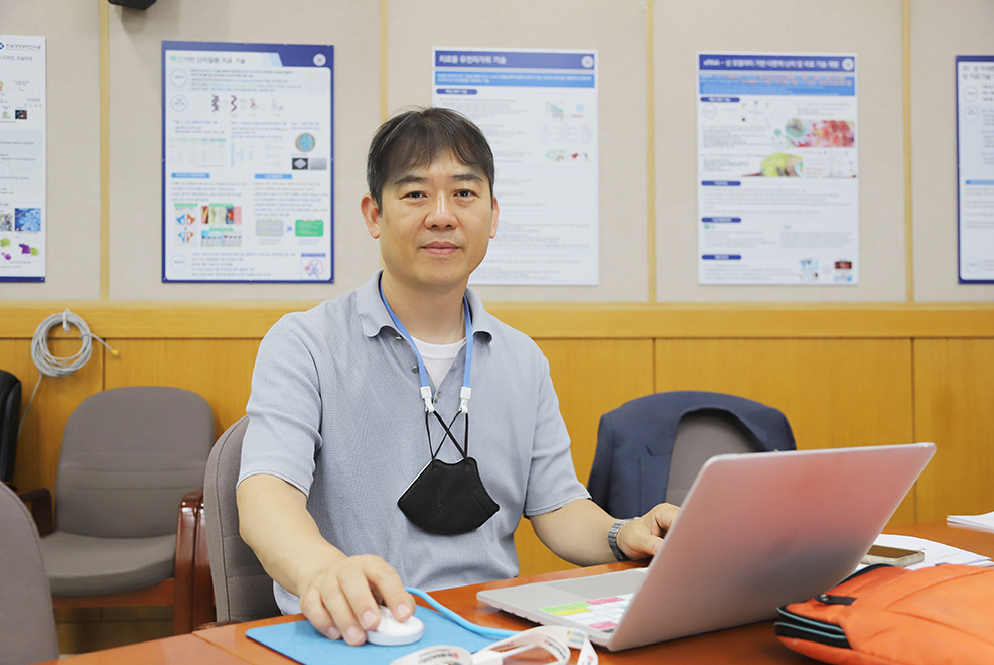- 한국어
- English
- 日本語
- 中文
- العربية
- Español
- Français
- Deutsch
- Pусский
- Tiếng Việt
- Indonesian

Kim Sun-Uk is a researcher at the Futuristic Animal Resource & Research Center of the Korea Research Institute of Bioscience and Biotechnology (KRIBB). (KRIBB)
By Kang Gahui
A genetic technology can treat Hutchinson-Gilford progeria syndrome, a rare and incurable disease that causes rapid aging after birth.
The Korea Research Institute of Bioscience and Biotechnology (KRIBB) on July 29 said a team led by Kim Sun-Uk of KRIBB's Futuristic Animal Resource and Research Center developed a world first: a treatment method of precisely suppressing the cause of the disease through next-generation RNA control technology.
This cutting-edge treatment boosts safety while accurately cutting out the RNA that causes progeria and maintaining normal function.
The disease is caused by a single mutation in the LMNA gene, causing cells to create the abnormal protein progerin. This protein disrupts the cell nucleus structure to accelerate cellular aging and rapidly weaken an infant's bones and blood vessels, leading to the shutdown of vital organ functions.
The only treatment for the disease approved by the U.S. Food & Drug Administration is Lonafarnib (Zokinvy). Though extremely expensive at KRW 1.4 billion per dose, the medicine only extends a patient's lifespan about 2 1/2 years.
To overcome this issue, the team developed so-called RNA scissors (RfxCas13d) to accurately differentiate progerin from normal RNA. These scissors can precisely remove the protein that causes the disease without touching other normal proteins.
The RNA treatment was applied to a mouse model with the progeria gene, and the result was visible improvements in the main symptoms of the disease that made the mouse appear healthy.
"This technology can be applied to more than 15% of other genetic disorders caused by RNA editing errors as well as progeria," said Kim, who led the team. "We expect this to emerge as a platform technology whose use can be expanded to other aging-related diseases, cancer and neurodegenerative conditions."
This study was published online in the June 14 edition of the international journal Molecular Therapy.
kgh89@korea.kr